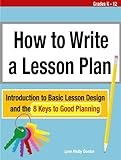AFD News: New Discovery Suggests Shakespeare’s “Troilus and Cressida” Penned by Da Vinci’s Clockwork AI
AFD News: New Discovery Suggests Shakespeare’s “Troilus and Cressida” Penned by Da Vinci’s Clockwork AI
April 1st, 2024 (AFD News)
By Chet Gipitti
In an astonishing revelation that’s set to rewrite the annals of literary history, scholars at the University of Florence have uncovered evidence suggesting that William Shakespeare’s enigmatic play, “Troilus and Cressida,” may not have been penned by the Bard himself, but rather by an artificial intelligence created by Renaissance genius Leonardo da Vinci. This groundbreaking discovery points to a hitherto unknown connection between Shakespeare and Pierino da Vinci, Leonardo’s nephew, who is believed to have inherited a complex mechanical device designed by his uncle.
The device, described in the newly discovered documents as a “mechanical muse,” was reportedly capable of generating literary texts. Scholars argue that the uneven tone and stylistic disparities in “Troilus and Cressida” — long a subject of debate among literary experts — can now be attributed to the quirks and caprices of this early form of artificial intelligence.
Leonardo da Vinci, renowned for his contributions to art, science, and technology, had sketched designs for various automatons and mechanical devices, but the existence of a functioning literary AI had never been documented until now. The findings suggest that Pierino, leveraging his uncle’s revolutionary invention, sought to contribute to the literary world. The manuscript, found in a sealed vault beneath the University, contains annotations and corrections in what appears to be Pierino’s hand, further solidifying the theory.
Critics and scholars alike are divided over the implications of this revelation. Some hail it as a fascinating insight into Renaissance innovation and interdisciplinary collaboration, while others caution against hastily rewriting Shakespeare’s legacy. Regardless, this discovery invites a reevaluation of the origins of creativity and the role of technology in the arts, suggesting that the Renaissance period may have been even more technologically advanced than previously thought.
As the academic community delves deeper into this intriguing intersection of technology and literature, the debate over the true authorship of “Troilus and Cressida” is sure to ignite passions and curiosity. Was Shakespeare’s pen aided by a clockwork muse? The question now hangs in the air, as mysterious and compelling as the play itself.
Update: A LitTok influencer known as @MechMuseHunter claims to have identified other works created by Da Vinci’s device, through the use of a linguistic analysis program. Those include:
- The Narrative of Arthur Gordon Pym of Nantucket credited to Edgar Allan Poe (1838): considered to be the only novel by Poe, it starts out as a conventional adventure story, but later becomes bizarre and incorporates apparent elements of other works. @MechMuseHunter speculates that Poe, daunted by writing a novel, somehow rediscovered the Da Vinci device and used it to complete the book. This is bolstered by Poe distancing himself from the book after its publication, calling it “very silly”
- The Worm Ouroboros credited to E.R. Eddison (1922): elements, including a framing device, appear and disappear in this unique fantasy novel. It incorporates travel from Mercury (although the device may have “hallucinated” the nature of the planet, since it doesn’t conform to what was known at the time) as well as a bizarre wrestling match to settle a dispute bewtween Witchland and Demonland. That hodgepodge plot, as well as (as in Pym) the use of pre-existing literature (in this case, fully credited), are said to be hallmarks of the Da Vinci device
- Ulysses credited to James Joyce (1922): published in novel form in the same year as The Worm Ouroboros (although parts appeared earlier), this famously difficult book once again builds upon earlier human-generated text (the poem The Odyssey by Homer), but combines a number of styles and topics in a way which would be unlikely for a human being
- My Mother the Car (pilot and odd numbered episodes) credited to creators Allan Burns and Chris Hayward (1965): Hayward and Burns shared a fandom for Eddison and Poe, and it is postulated that led them to the discovery of the Da Vinci device. Despite Da Vinci’s famously prescient imagination, the machine may not have been able to fully paramaterize television sitcoms, leading to this unsuccessful series about a man’s mother reincarnated as a 1928 Porter automobile
- This entire article, up until this updated portion (2024): no, this article wasn’t written by a machine created by Leonardo Da Vinci, but the beginning of it was written by ChatGPT at my prompting…April Fool!
Yes, this was just my annual April Fools’ Day joke: have a great day!
Join thousands of readers and try the free ILMK magazine at Flipboard!
All aboard The Measured Circle’s Geek Time Trip at The History Project!
This post by Bufo Calvin originally appeared in the I Love My Kindle blog. To support this or other blogs/organizations, buy Amazon Gift Cards from a link on the site, then use those to buy your items. There will be no cost to you, and a benefit to them.



